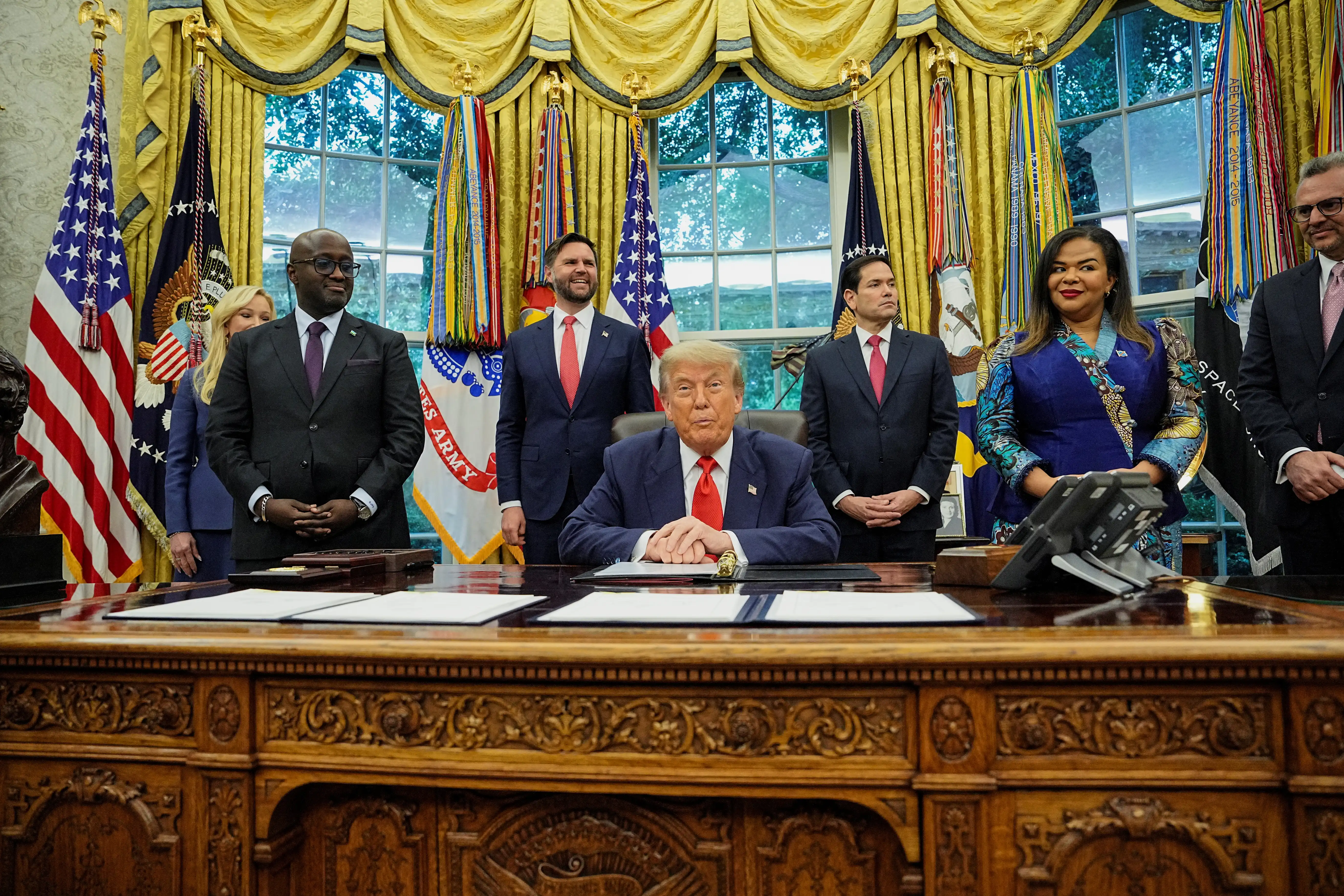
Reporter’s Diary: The true price of gold

For Judith Akelo Otana, she can no longer hold a cup of water still – or bathe herself fully. Ever since her hands began shaking and skin itching, the simple things in life have become near impossible.
Judith is a gold buyer, and has been for most of her adult life. But for her, the way she makes a living – may also be slowly killing her.
“I am generally weak, and for all the domestic work that I used to do, I have had to employ somebody to do for me,” Judith told me, as she proceeded to demonstrate just how difficult drinking a cup of water was for her.
To health experts, she is displaying symptoms typical to that of people who have been exposed to the neurotoxin mercury. From a recent study, they have found that the use of mercury in the gold extraction process is having significant health impacts on those involved.
Read about the dangers of informal mining in East Africa
Typically in small-scale and artisanal mines, Mercury is used in the final stages of the gold extraction process.
In many mines in Western Kenya, mercury is put into use after the sluicing and panning methods, which help to concentrate the ore.
Gold dissolves in mercury similar to the way salt dissolves in water. Miners submerge their ore in mercury, which takes on the gold but not the other impurities. The mixture of mercury and gold is then recollected and heated until the mercury boils away.

It is these two stages that see people come into contact with the chemical, both in its liquid and vapour form.
Women who work around the sluicing pools with bowls to pan the gold frequently touch the mercury with their bare hands. It is a technique that has been used for centuries due to its simplicity, yet only recently have people started to be made aware of its health effects.
Eunice Atieno, a woman who has spent her life on the side of the sluicing pool, has noticed serious side effects to working with mercury. To stop her shaking, she has seeked medical help – but is now concerned that the mercury may have impacted her child.
“I am worried and scared for the child. The moment that I was really sick, and being referred to different hospitals, was the time that I was pregnant with my child. I am aware of the dangers,” she told me.
The World Health Organisation (WHO) states that foetuses are most susceptible to developmental effects due to mercury. It says that “methylmercury exposure in the womb can adversely affect a baby’s growing brain and nervous system”.
Impaired neurological development, impacting cognitive thinking, memory, attention, language, and fine motor and visual spatial skills may be affected in children who were exposed to methylmercury as foetuses.
By the WHO’s analysis, Eunice has every right to be concerned.
Impacts outside the mines
In the untied markets of Masara town, where vendors shout into the early evening and shoppers weave through the tight alleyways, gold is sold in corrugated-iron shacks.
This is where gold miners, sellers and buyers make their money. Through the process of boiling off the mercury, sellers reveal gold. But it is this technique which can be the most dangerous.
Lined outside the front of the gold vendor huts, small burners boil off the mercury – releasing the harmful chemical into the air. For those who frequent the market, or buy gold, they inhale these fumes.
Judith is an example of what can happen when frequently exposed to the chemical – and although it has provided a livelihood for herself, and many others in the community, it has consequentially spread to the wider-town.
Of the more than 1,000 women across 25 countries including Kenya, whose hair samples were tested for mercury by IPEN, a network of charities focusing on health and environment, over 40% had mercury levels greater than 1 part per million (ppm).

This far exceeds the United States Environmental Protection Agency’s safe exposure level.
“It is said, above the 1 ppm, which is a reference level, that is where you begin to see the effects of mercury – aspects of brain development, effect on nervous systems. You begin to lack balance and coordination of the body. You’ll see trembles and the rest,” Griffins Ochieng, Programs Coordinator of CEJAD – an organisation working hand-in-hand with IPEN – told me.
But the chemical is not only transmitted from body-to-body contact, or through the air. Surface runoff in the rainy seasons carries the deposited mercury from the mines to the rivers and dams.
It’s a matter that greatly concerns the local deputy headteacher of Mikei Primary School, Dicky Ogolla Opul – who has spoken of mercury being discovered in the community’s most popular dam.
“This dam is being used by the community as the source of water. They are using it for drinking, even by animals. As time goes by, this is going to affect the lives of people around here.”
He has seen how the mines have affected the children of the community firsthand: Every year a number of students drop out to work on the mines. Children coming into contact with these chemicals is another worry in a wide-scale problem that reaches every corner of the community.
What is the alternative?
Many women who work with mercury in the mines, or those who buy from the fume-filled alleyways, are unaware of the health impacts of mercury.
But even if they do, this is their livelihood.
In August, the Minamata Convention on Mercury, a global treaty to reduce the use of mercury, came into force. Ratifying countries must develop plans to eliminate harmful mercury use, promote mercury-free mining and improve miners’ health.
While almost 130 nations signed the agreement, about 40 – including Kenya, Tanzania and Uganda – have not ratified it, according to Reuters.
With no concrete action plan in place, many miners are concerned of what will happen to their jobs if mercury is banned from use.

IPEN, and other organisations researching into the use of harmful chemicals in mining, are looking at phasing out the use of mercury.
Griffins believes that by bringing in the alternative technologies that have been proven and are found to be more effective in extracting gold, it can help persuade those using mercury to jump ship. However many of these alternative technologies are too pricey, and not readily available to the people in the region.
Organisations have also turned their attention to those importing the chemical.
“We need to address the sources of mercury import and trade in the country,” Griffins told me.
“If we can remit the supply, and also the trade, of mercury, then we can address the problem that we see – and the effects.”
However, with over 10,000 informal gold mines in the region, and hundreds of thousands employed in the industry, this is a huge task.
As Kenyan authorities work to officially phase out the use of mercury in its mines, they not only face changing the mindset of the miners – but also of the communities that have thrived because of it.






